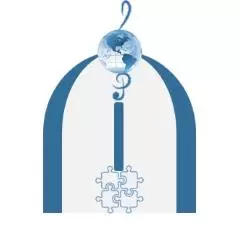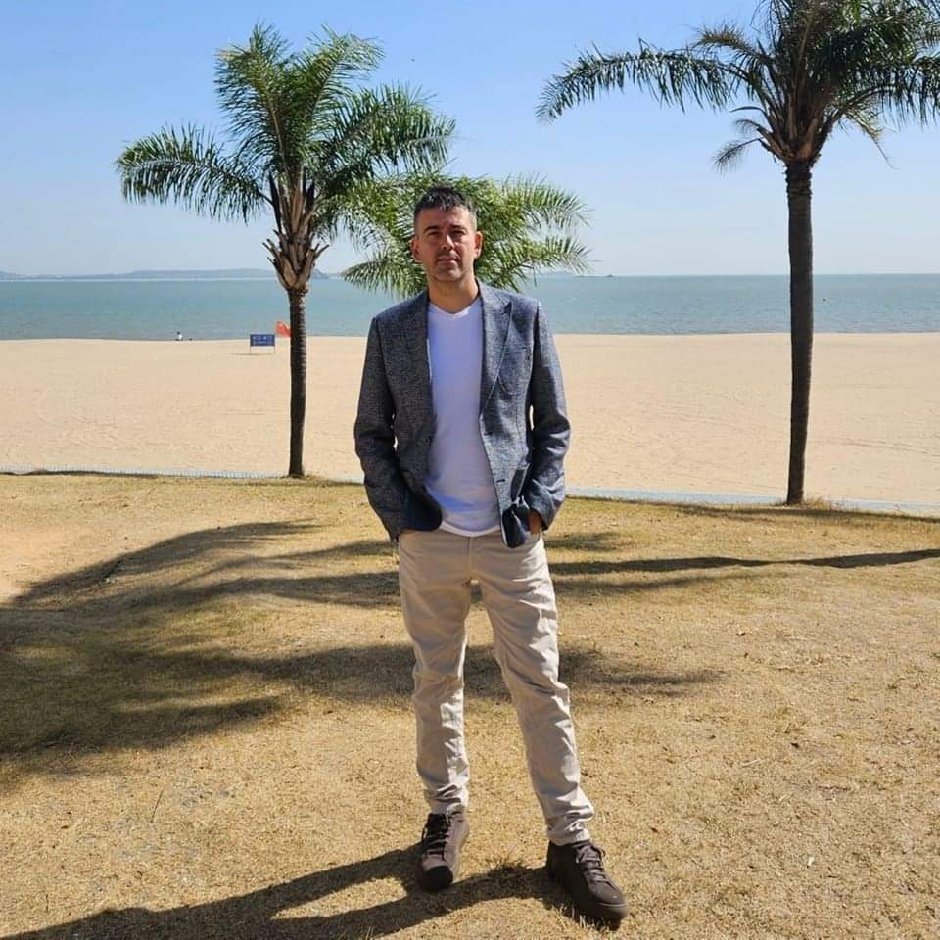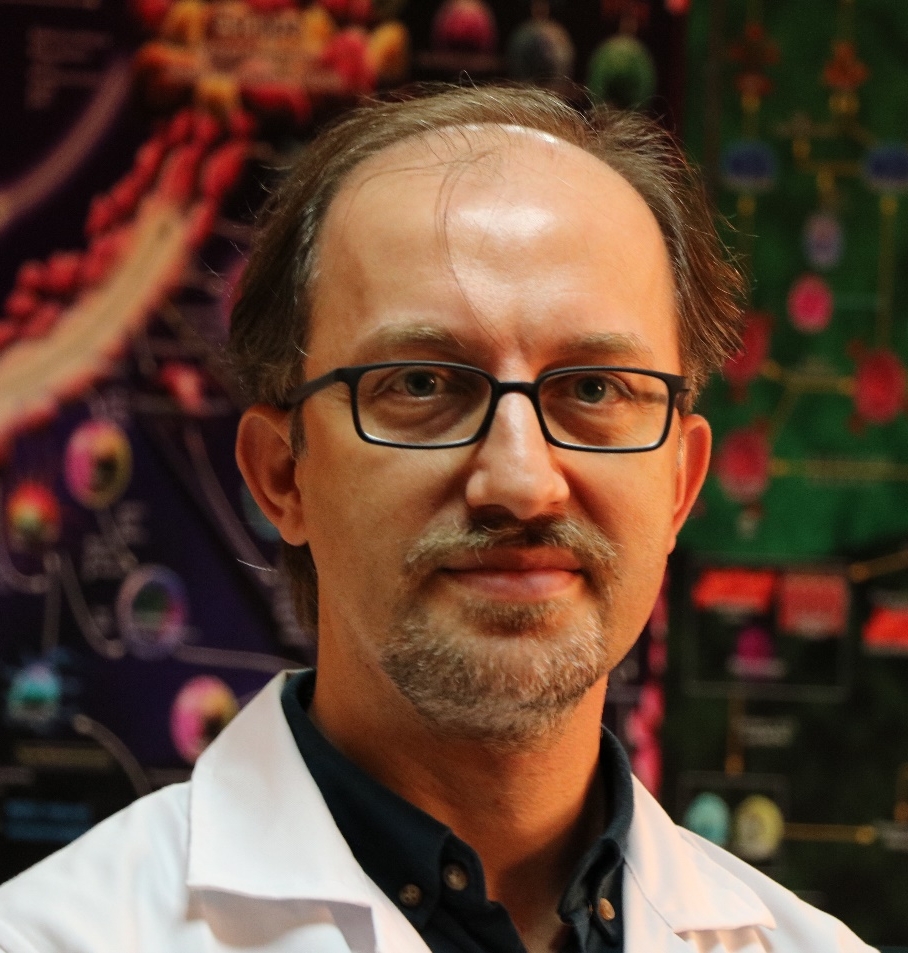Integrated Science Association (ISA)

Objective
The Integrated Science Association (ISA) is aimed to work collaboratively to do transdisciplinary studies and publish integrated science literature.
Definition
The “Integrated Science Association (ISA)” is the association of international scientists who are interested in transdisciplinarity fields, to highlight integration of different disciplines. The whole world is suffering from complex problems, which are borderless problems; so, borderless solution could be the solution for such complex problems. Transdisciplinarity, as a domain that researchers work jointly, using shared conceptual framework drawing together disciplinary-specific theories, concepts and approaches to address common problem.
Group members
Founder
Managing Director
Member
-

Vladimiras Dolgopolovas
-

Kuan-Chen Tsai
-

KAAN BATI
-

Mohammad Badar
-

Abdurrahman Abdurrahman
-

Stefania Achella
-

Patricia Caratozzolo
-

Piotr Rzymski
-

Mario Villena-Gonzalez
-

Leander Marquez
-

Sophie Bollinger
-

Chi-Ming Lam
-

Christopher Ryan Maboloc
-

Daniela Dumitru
-

Pedro Moscoso-Flores
-

Mauro Scalercio
-

Delfín Ortega-Sánchez
-

Sedat Batmaz
-

claudio lucchiari
-

Ana Ferreira
-

Wojciech Krysztofiak
-

Silvia Nuere
-

Shirley Vincent
-

Clara Vasconcelos
-

Syahrul Ramadhan
-

Dustin Hellberg
-

Salvatore Lorusso
-

Eva Gacitua
-

Natalya Shelkovaya
-

Billy Danday
-

Marko Pajević
-

Gabriela Florea
-

Žilvinas Svigaris
-

Leonardo Rodriguez Zoya
-

Amine Harbi
-

carlo brentari
-

Mathilde CELUME
-

Miloš Milošević
-

Nadira Khasankhonova
-

Houneida SAKLY
-

Oleksandr Stryzhak
-

roberto franzini tibaldeo
-

Ermelinda Sanseviero
-

Emad AbouElgheit
-

Todd McElroy
-

Farid MENAA
-

Harah Chon
-

Yalçın Dilekli
-

Trevor Tebbs
-

George Gadanidis
-

Ryota Ono
-

Joe Ravetz
-

Christopher Haines
-

Mirko Farina
-

Nurulwahida Azid
-

Muhammad Asy'ari
-

Claudio Gaete Peralta
-

Dušan Marković
-

Sarah Cuschieri
-

Alessandro Siani
-

Sandul Yasobant
-

Ilias Elmouki
-

Vijay Kumar Chattu
-

Ni Komang Rahyani
-

Tapen Sinha
-

Armin Rainer
-

Ruth Oriama
-

Derya Yilmaz
-

Ayman Ahmed
-

Charu Gupta
-

Guruprasad Samanta
-

Carlos Rodriguez Lucatero
-

Milan Terzic
-

Muhammad Asaduzzaman
Book
- Integrated Science
-
The Integrated Science Series aims to publish the most relevant and novel research in all areas of Formal Sciences, Physical and Chemical Sciences, Biological Sciences, Medical Sciences, and Social Sciences. We are especially focused on the research involving the integration of two of more academic fields offering an innovative view, which is one of the main focuses of Universal Scientific Education and Research Network (USERN), science without borders.
- INTEGRATED SCIENCE: Science without Borders
-
The “INTEGRATED SCIENCE: Science without Borders” is the first volume of INTEGRATED SCIENCE Book series, aims to publish the results of the most update ideas and reviews in transdisciplinarity fields, to highlight integration of different disciplines, including formal sciences, physical-chemical sciences and engineering, biological sciences, medical sciences, and social sciences. This is especially focused on the research involving the integration of two of more academic fields offering an innovative view, which is one of the main focuses of Universal Scientific Education and Research Network (USERN); science without borders. The whole world is suffering from complex problems; these are actually borderless problems; so, borderless solution could be the solution for such complex problems. Transdisciplinarity, as a domain that researchers work jointly, using shared conceptual framework drawing together disciplinary-specific theories, concepts and approaches to address common problem. Lack of confidence, lack of expertise, complexities of healthcare, the confusing nature of healthcare environments and lack of organization and standardization became obstacles to successful communication. Consequently, the book is to provide an overview of the basic elements of transdisciplinary studies and integrated science. The unique aspect of this book, privileging it from other books, is covering all aspects of science as a true one nature.
- Transdisciplinarity
-
This contributed volume book aims at discussing transdisciplinary approaches to address common problems. By working transdisciplinarily, researchers coming from different disciplines can work jointly using a shared conceptual framework bringing together disciplinary-specific theories and concepts. There are numerous barriers that can obstruct effective communication between different cultures, communities, religions and geographies. This book shows that through bringing together different disciplines, researchers not only can surpass these barriers but can effectively produce new venues of thought that can positively affect the development and evolution of research and education. The book discusses new and emerging applications of knowledge produced by transdisciplinary efforts and covers the interplay of many disciplines, including agriculture, economics, mathematics, engineering, industry, information technology, marketing, nanoscience, neuroscience, space exploration, human-animal relationships, among others. Consequently, it also covers the relationship between art and science, as one of the most remarkable transdisciplinary approaches that paves the way for new methods in engineering, design, architecture and many other fields.
- Multidisciplinarity and Interdisciplinarity in Health
-
The contributed volume "Multidisciplinarity and Interdisciplinarity in Health" is a health-centered volume of the Integrated Science Book series. Lack of confidence, lack of expertise, complexities of healthcare, the confusing nature of healthcare environments, and lack of organization and standardization can become obstacles to successful communication. This volume establishes how extensive is the interface between formal sciences and medical sciences on health-related issues. The book provides an overview of the value of the integration of formal, biological, and medical sciences and related products, i.e., health informatics and biomedical engineering, to frame a holistic approach to health systems, healthcare, medical practice, drug discovery, and medical device design. The book also focuses on innovative solutions to the most critical issues of different health crisis, including obesity, infectious outbreaks, and cancer that can be found by using an integrative approach. It also contains the fascinating crossroads between medical sciences, physics, and mind that is discussed from multiple perspectives on cognition, neuroscience, and psychiatry. These multidisciplinary considerations will expand the concepts of creativity, leadership, aesthetics, empathy and mental health.
- THINKING: Bioengineering of Science and Art
-
The “THINKING: Bioengineering of Science and Art” is to discuss about philosophical aspects of thinking at the context of Science and Art. External representations provide evidence that the fundamental process of thinking exists in both animal subjects and humans. However, the diversity and complexity of thinking in humans is astonishing because humans have been permitted to integrate scientific accounts into their accounts and create excellent illustrations for the effects of this integration. The book necessarily begins with the origins of human thinking and human thinking into self and others, body, and life. Multiple factors tend to modify the pattern of thinking. They all will come into play by this book that brings thinking into different disciplines: humanities, natural sciences, social sciences, formal sciences, and applied sciences. The thinking demands full processing of information, and therefore, the book considers the economy of thinking as well. The book thoroughly intends to explore thinking beyond the boundaries. Specifically, several chapters are devoted to discipline this exploration either by artistic thinking alone or by art and mathematics-aided engineering of complexities. In this manner, the book models variations on thinking at the individual and systems levels and accumulates a list of solutions, each good for specific scenarios and maximal outcomes.
- Enhancing Environmental Education Through Nature-Based Solutions
-
This Book presents innovative and state of the art studies developed in Environmental Education in different countries to highlight this theme and promote its implementation all over the world. It will give a scientific perspective of Nature-based solutions to promote environmental education in all citizens and a more educational perspective as to how this approach can be implemented at schools and universities. Not less important is that includes science communication as a key factor for training and disseminating about the environment. The invited authors are recognized experts with excellent work developed in Environmental Education. This contributed volume presents innovative and creative work in the area giving a step forward in the implementation of Environmental Education, namely as a target of 2020 United Nations Agenda for Sustainable Development. The invitation of authors from many different countries allows the creation of a network and subsequently the book will bring concrete ideas as to how to develop operational capacities to bring added values to Environmental Education at an international level.
- Tuberculosis Integrated Studies for a Complex Disease
-
Tuberculosis have been documented since antiquity and the search of the microbes that cause this disease started more than three hundred years ago. Nevertheless, tuberculosis remains an important global health issue, with millions of people affected per year in addition to millions that remain undiagnosed and untreated. Patients with tuberculosis face the full range of recurrence, reinfection, and resistance due to diagnostic, prophylactic, and therapeutic procedures that are not as effective as they should be. In addition, variability in susceptibility to tuberculosis pose a complex problem with numerous interrelated variables. This volume is devoted to the understanding of Tuberculosis focusing on its heterogeneity, its transmission, manifestations, related conditions, diagnosis, treatments, drug resistance and prevention.
- Integrated Science of Global Epidemics
-
The “Integrated Science of Global Epidemics” is the new proposed volume of Integrated Science Book series, aiming to publish the results of the most updated ideas and reviews on Global Epidemics. The whole world is suffering from complex problems, border less problems and global solution should be developed. The Integrated Science of Global Epidemics aims to highlight the combination of different disciplines, including formal sciences, physical-chemical sciences and engineering, biological sciences, medical sciences, and social sciences, to deal with complex problems such as global epidemics. This contributed volume could be used as guidelines for the entire scientific community and policy makers to successfully face these global threats.
Paper
- Nowakowska J, Sobocińska J, Lewicki M, Lemańska Ż, Rzymski P. When science goes viral: The research response during three months of the COVID-19 outbreak. Biomedicine & Pharmacotherapy. 2020 Sep 1;129:110451.
-
NULL
- Olszewska A, Rzymski P. Children’s Dental Anxiety during the COVID-19 Pandemic: Polish Experience. Journal of clinical medicine. 2020 Sep;9(9):2751.
-
NULL
- Krasińska B, Paluszkiewicz L, Miciak-Ławicka E, Krasinski M, Rzymski P, Tykarski A, Krasiński Z. The impact of acetylsalicylic acid dosed at bedtime on circadian rhythms of blood pressure in the high-risk group of cardiovascular patients—a randomized...
-
NULL
- Halabowski D, Rzymski P. Taking a lesson from the COVID-19 pandemic: Preventing the future outbreaks of viral zoonoses through a multi-faceted approach. Science of The Total Environment. 2020 Nov 14:143723.
-
NULL
- Rzymski P, Fal A. To aspirate or not to aspirate? Considerations for the COVID-19 vaccines. Pharmacological Reports. 2022 Mar 23:1-5.
-
NULL
- Rzymski, P., Perek, B. and Flisiak, R., 2021. Thrombotic thrombocytopenia after COVID-19 vaccination: in search of the underlying mechanism. Vaccines, 9(6), p.559.
-
NULL
- Aguilera, A., Klemenčič, M., Sueldo, D.J., Rzymski, P., Giannuzzi, L. and Martin, M.V., 2021. Cell death in cyanobacteria: current understanding and recommendations for a consensus on its nomenclature. Frontiers in Microbiology, 12, p.416.
-
NULL
- Rzymski, P., Borkowski, L., Drąg, M., Flisiak, R., Jemielity, J., Krajewski, J., Mastalerz-Migas, A., Matyja, A., Pyrć, K., Simon, K. and Sutkowski, M., 2021. The strategies to support the COVID-19 vaccination with evidence-based communication and ta...
-
NULL
- Rzymski, P., Kulus, M., Jankowski, M., Dompe, C., Bryl, R., Petitte, J.N., Kempisty, B. and Mozdziak, P., 2021. COVID-19 pandemic is a call to search for alternative protein sources as food and feed: A review of possibilities. Nutrients, 13(1), p.150...
-
NULL
- Gwenzi, W., Chaukura, N., Muisa-Zikali, N., Teta, C., Musvuugwa, T., Rzymski, P. and Abia, A.L.K., 2021. Insects, rodents, and pets as reservoirs, vectors, and sentinels of antimicrobial resistance. Antibiotics, 10(1), p.68.
-
NULL
- Retraction in the online world—Shall we rethink the policy?
-
NULL
- Ortega-Sánchez, D., Alonso-Centeno, A. and Corbí, M., 2020. Socio-environmental problematic, end-purposes, and strategies relating to education for sustainable development (ESD) through the perspectives of Spanish secondary education trainee teachers...
-
NULL
- Ortega-Sánchez, D., Blanch, J.P., Quintana, J.I., Cal, E.S.D.L. and de la Fuente-Anuncibay, R., 2021. Hate speech, emotions, and gender identities: a study of social narratives on Twitter with trainee teachers. International journal of environmental...
-
NULL
- Budzyńska, S., Siwulski, M., Magdziak, Z., Budka, A., Gąsecka, M., Kalač, P., Rzymski, P., Niedzielski, P. and Mleczek, M., 2021. Influence of Iron Addition (Alone or with Calcium) to Elements Biofortification and Antioxidants in Pholiota nameko. Pla...
-
NULL
- Hu, C. and Rzymski, P., 2022. Non-Photosynthetic Melainabacteria (Cyanobacteria) in Human Gut: Characteristics and Association with Health. Life, 12(4), p.476.
-
NULL
- Nowaczyk, J., Poniedziałek, B., Rzymski, P., Sikora, D. and Ropacka-Lesiak, M., 2022. Platelets in Fetal Growth Restriction: Role of Reactive Oxygen Species, Oxygen Metabolism, and Aggregation. Cells, 11(4), p.724.
-
NULL
- Flisiak, R., Rzymski, P., Zarębska-Michaluk, D., Rogalska, M., Rorat, M., Czupryna, P., Lorenc, B., Ciechanowski, P., Kozielewicz, D., Piekarska, A. and Pokorska-Śpiewak, M., 2021. Demographic and clinical overview of hospitalized COVID-19 patients d...
-
NULL
- Sikora, D. and Rzymski, P., 2022. COVID-19 Vaccination and Rates of Infections, Hospitalizations, ICU Admissions, and Deaths in the European Economic Area during Autumn 2021 Wave of SARS-CoV-2. Vaccines, 10(3), p.437.
-
NULL
- Rzymski, P., Pazgan-Simon, M., Kamerys, J., Moniuszko-Malinowska, A., Sikorska, K., Wernik, J., Zarębska-Michaluk, D., Supronowicz, Ł., Sobala-Szczygieł, B., Skrzat-Klapaczyńska, A. and Simon, K., 2022. Severe Breakthrough COVID-19 Cases during Six M...
-
NULL
- Ortega-Sánchez, D., Pagès Blanch, J. and Pérez-González, C., 2020. Emotions and Construction of National Identities in Historical Education. Education Sciences, 10(11), p.322.
-
NULL
- Paszynska, E., Cofta, S., Hernik, A., Otulakowska-Skrzynska, J., Springer, D., Roszak, M., Sidor, A. and Rzymski, P., 2022. Self-Reported Dietary Choices and Oral Health Care Needs during COVID-19 Quarantine: A Cross-Sectional Study. Nutrients, 14(2)...
-
NULL
- Zarębska-Michaluk, D., Rzymski, P., Moniuszko-Malinowska, A., Brzdęk, M., Martonik, D., Rorat, M., Wielgat, J., Kłos, K., Musierowicz, W., Wasilewski, P. and Mazur, W., 2022. Does Hospitalization Change the Perception of COVID-19 Vaccines among Unvac...
-
NULL
- Rzymski, P., Zeyland, J., Poniedziałek, B., Małecka, I. and Wysocki, J., 2021. The perception and attitudes toward COVID-19 vaccines: a cross-sectional study in Poland. Vaccines, 9(4), p.382.
-
NULL
- Rzymski, P., Poniedziałek, B. and Fal, A., 2021. Willingness to receive the booster COVID-19 vaccine dose in Poland. Vaccines, 9(11), p.1286.
-
NULL
- Nowak, B.M., Miedziarek, C., Pełczyński, S. and Rzymski, P., 2021. Misinformation, Fears and Adherence to Preventive Measures during the Early Phase of COVID-19 Pandemic: A Cross-Sectional Study in Poland. International journal of environmental resea...
-
NULL
- Rzymski, P., Pazgan-Simon, M., Simon, K., Łapiński, T., Zarębska-Michaluk, D., Szczepańska, B., Chojnicki, M., Mozer-Lisewska, I. and Flisiak, R., 2021. Clinical characteristics of hospitalized COVID-19 patients who received at least one dose of COVI...
-
NULL
- Rzymski, P., Poniedziałek, B., Hippmann, N. and Kaczmarek, Ł., 2022. Screening the Survival of Cyanobacteria Under Perchlorate Stress. Potential Implications for Mars In Situ Resource Utilization. Astrobiology.
-
NULL
- Mleczek, M., Gąsecka, M., Budka, A., Niedzielski, P., Siwulski, M., Kalač, P., Mleczek, P. and Rzymski, P., 2021. Changes in mineral composition of six strains of Pleurotus after substrate modifications with different share of nitrogen forms. Europea...
-
NULL
- Mleczek, M., Budka, A., Siwulski, M., Mleczek, P., Budzyńska, S., Proch, J., Gąsecka, M., Niedzielski, P. and Rzymski, P., 2021. A comparison of toxic and essential elements in edible wild and cultivated mushroom species. European Food Research and T...
-
NULL
- Krasińska, B., Paluszkiewicz, L., Miciak-Ławicka, E., Krasinski, M., Rzymski, P., Tykarski, A. and Krasiński, Z., 2021. The impact of acetylsalicylic acid dosed at bedtime on circadian rhythms of blood pressure in the high-risk group of cardiovascula...
-
NULL
